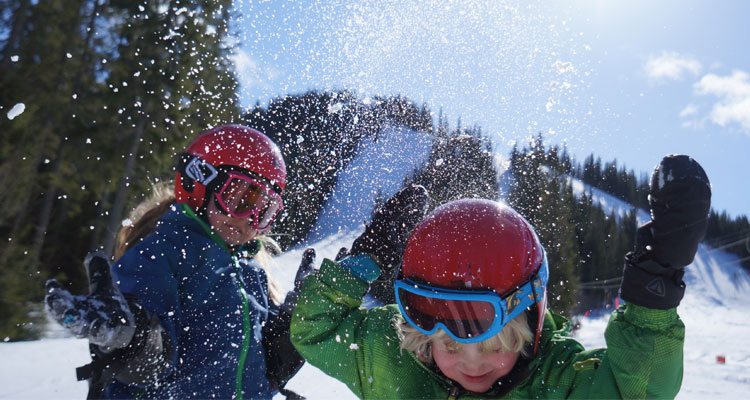Keeping your children safe in the snow is a big concern for many parents. About 500 people die annually due to icy roads and poor weather conditions in the winter. In addition, countless injuries arise from car accidents, falls on the ice, and snow and ice falling off roofs. Children have even been known to get trapped in the snow after their fort collapses on them. It’s scary, but true. Keep your winter season filled with meaning and magic rather than avoidable accidents by following these winter safety tips.
Provide Your Child With the Right Accessories
Keeping your children safe in the snow isn’t just about having an eye on them at all times. It can start as early as picking out the right clothing. Frostbite, for example, can affect anyone exposed to below freezing temperatures without adequate clothing. Start by providing your child with enough clothing that will protect him or her from the cold. Some essentials you won’t want to forget include:
- Long underwear
- A scarf or something similar to keep your child’s face warm
- An insulated pair of gloves
- Snow pants
- An extra pair of socks for added insulation
Also be sure his or her jacket is insulated enough to stay warm, and that it’s waterproof enough that it won’t leave your child wet and cold after playing outside. Never send your child out into the cold in wet clothing. Finally, be sure your child has sturdy boots that will keep his or her little toes warm, and that they fit properly and provide enough traction to prevent falls on slippery surfaces.
Use Sand and Salt
Wrist injuries happen often in the winter due to slips on the ice. Many of these injuries occur on the way from the front door to the car. Active children who spend a lot of time playing in the snow are likely to fall a time or two, but you can prevent injuries by preparing the walkway and the driveway for safe travel. Do this by shoveling snow and ice as soon as you can. Then sprinkle salt and sand over slick areas to melt the ice and increase traction so you aren’t left with a hurt little one.
Prepare Your Vehicle
Do your best to get your car ready for winter; for example, switch to snow tires. You can’t always prevent an accident, but you can certainly prepare for one. Equip your car with the right tools in case you run into trouble. Some things to keep in your emergency kit include:
- A blanket keep you warm in case your car stops working
- A few snacks, as it can take time to get rescued
- Tire chains
- A shovel
- Windshield scraper
- Flashlight with extra batteries
- First aid kit
- Tow chain
- Cat litter or sand for traction
Have Emergency Information on Hand
It’s important to be prepared in case anything bad happens to you or your family. For instance, some states have snow emergency hotlines, so it’s worth programming those numbers into your phone to stay up-to-date on snow emergency news.
Your child’s safety is important to you. If you’re looking for a school that shares your values and will keep your child safe at home this winter, K12 can help.
Image Credit – Marcus Hansson / CC by 2.0





































